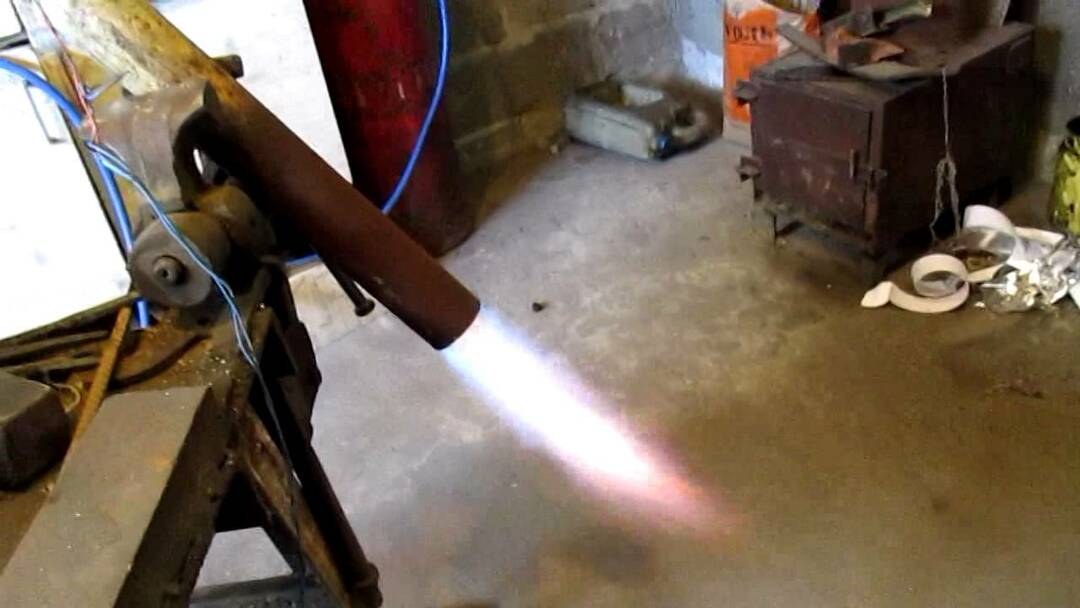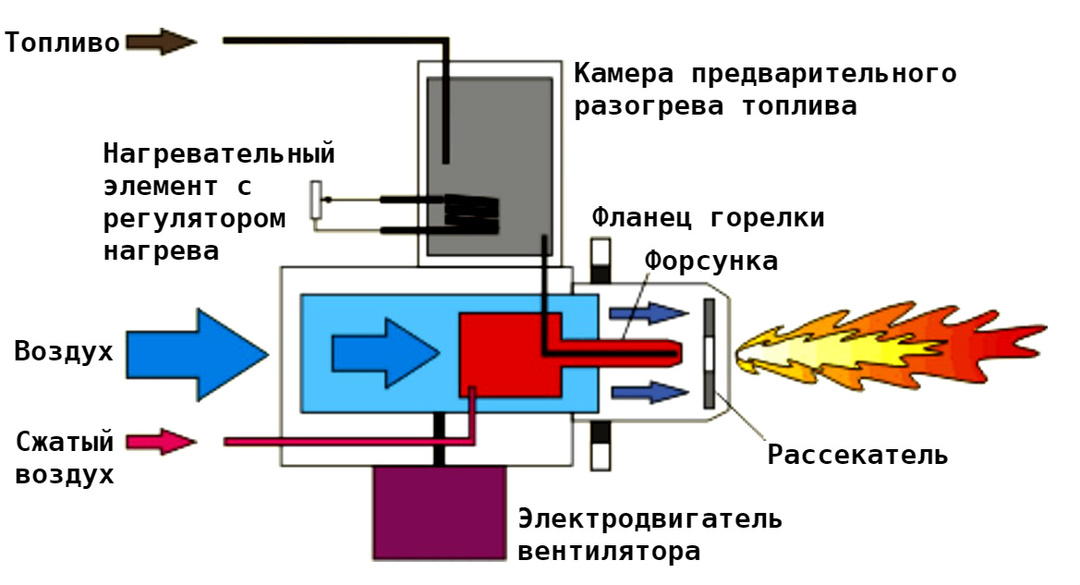Almost everywhere, natural gas is the cheapest energy source for home heating. And if there is no way to bring the pipe to the cottage, gas workers offer an option in the form of LPG. At first glance, gas heating with a gas tank looks like a good alternative, doesn't it? Autonomous gasification guarantees independence and does not require coordination with the long-term receipt of technical specifications. However, everything has its pitfalls.
We have studied all the pros and cons of liquefied petroleum fuels and will tell you how good it actually is. Our research will definitely help you decide exactly whether it is worth installing gas storage equipment at your site.
The content of the article:
- How profitable is heating from a gas tank?
-
Installation and operation of the LPG tank
- Choosing a place for a gas tank on the site
- Inspection, refueling and maintenance
- Comparison of all the pros and cons
- Conclusions and useful video on the topic
How profitable is heating from a gas tank?
Heating a cottage with natural gas is considered the cheapest solution possible. However, this is true only if the boiler or boiler is connected to the main gas pipeline.
The gas tanks are filled with liquefied hydrocarbon gases - LPG. This mixture is very different from the one that is supplied to the house through the pipe in terms of both chemical composition and cost. In the first case, methane-based fuel is supplied to the gas equipment, and in the second, it consists of propane and butane.
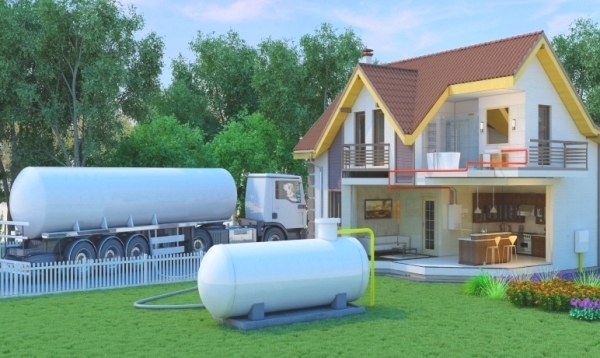
Taking into account the calorific value and efficiency of the corresponding boilers based on the net fuel costs, the cost of 1 kJ or 1 kW * h from LPG will be 5-6 times more expensive than from natural methane gas
Much depends on the region of residence, but almost everywhere in Russia, at the price of fuel, the propane-butane mixture wins only over diesel fuel and electricity. Heating a house with wood, pellets or coal in the vast majority of cases will be more profitable than using LPG.
In terms of the cost of equipment for heating the coolant into the heating system of the cottage, liquefied gas also loses to almost all other types of fuel. And you also need to take into account the costs of the gas tank itself and its installation on site.
In some situations, in terms of capital expenditures, LPG may come out cheaper only than main gas. And then only on condition that the owner of the house will pay for the laying of gas pipes in full. But usually gasification of settlements is partially carried out at the expense of the state budget. And the gas tank for autonomous gas supply, in any case, will have to be paid completely independently.
Installation and operation of the LPG tank
Each heating option has its own nuances in terms of design, installation work, commissioning, fuel purchase and further system maintenance. For example, for the organization of heating a house using electricity and main gas, it is mandatory to obtain technical specifications from the supply company. Not always and not all electric or gas networks have additional power for connection.
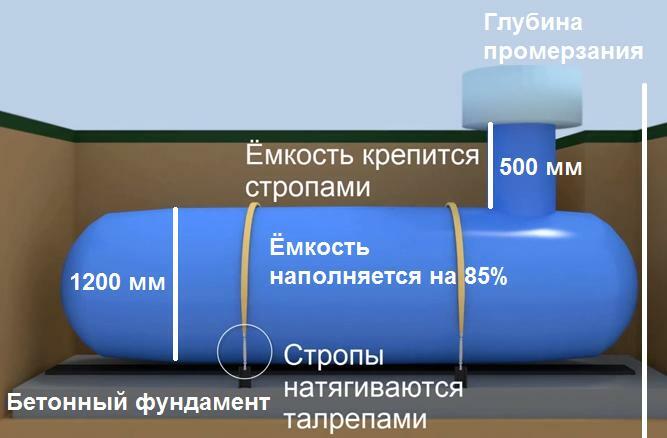
Heating of a private household with a mini-gas holder does not require approvals from government agencies and, in general, their notifications, but such equipment has its own mandatory requirements for security
The installation of a gas tank on a house plot should be carried out by a specialized company. You cannot do this on your own. Then it will be extremely difficult to find a supplier of LPG, since in case of problems when pumping liquefied gas into the tank, he is responsible for everything. It is unlikely that anyone would want to be responsible for other people's mistakes in the installation and selection of gas-holder fittings.
In terms of simplicity of coordination, design and execution of installation work, the gas tank is second only to solid fuel boilers. They only need to be delivered to the house and installed in the boiler room.
Choosing a place for a gas tank on the site
One of the most problematic moments in the organization of gas storage heating is the choice of the location for the underground tank with LPG. Here it is important to take into account the regulations on fire and technical safety, as well as the peculiarities of the soil and the gas equipment itself.
Structurally, gas tanks for autonomous gas supply are:
- vertical;
- horizontal;
- mobile (ground on a trolley).
They also differ in shape into cylindrical and spherical.
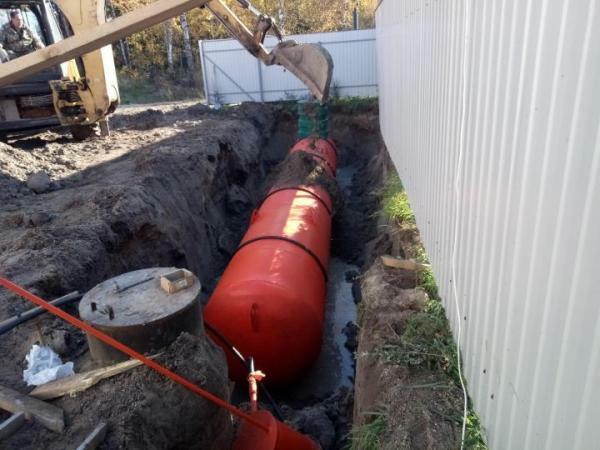
For gas supply of cottages, it is recommended to choose horizontal cylindrical gas tanks, they are large in width / length and take up a lot of space, but they are not laid too deep in the ground
There is little use in the Russian climate from mobile installations for storing LPG. In the gasholder, the propane-butane mixture is partly liquefied and partly in gaseous form. Moreover, if propane retains its gas properties down to -35 ° C, butane turns into a liquid already at -0.5 ° C.
At low temperatures outside, it will be impossible to obtain butane in the right state for combustion in a heating boiler from an above-ground tank. To do this, it will have to be heated, which will further increase the cost of heating the house.
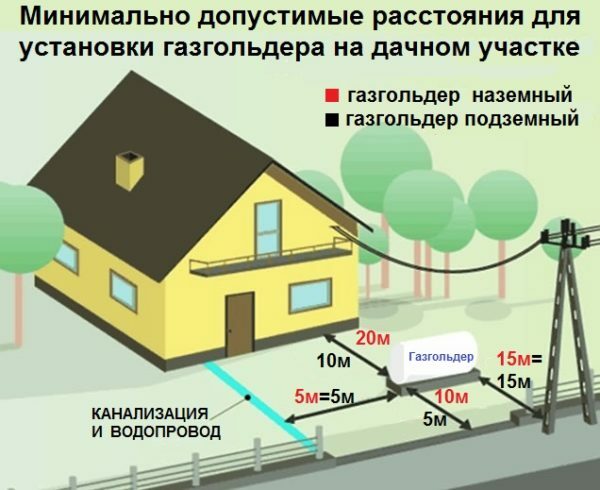
In the gaseous state, propane and butane are heavier than air, therefore, gas tanks must not be installed near wells and basements. When a leak occurs, gas will begin to accumulate in these recesses and sooner or later explode.
The location for the underground gas tank is selected so that:
- distance from a residential building to a LPG tank with a capacity of no more than 10 m3 was at least 10 m;
- the capacity was located from the buried foundations of buildings at least 2 m;
- the drive was easily accessible for refueling from a tanker;
- the tank turned out to be buried below the freezing point of the soil;
- there were no buildings, electrical cables, concrete paths, trees, etc. above.
Only lawns are allowed on top of the gasholder. At the same time, they will even have to mow the grass in the old fashioned way - with an oblique, and not an electric or gasoline lawn mower. The slightest spark, coupled with the accumulated gas due to a small leak, will certainly lead to a fire or a pop.
We also recommend reading our other article, where we talked in detail about how to correctly place a gas tank Location on.
Inspection, refueling and maintenance
The volume of the gas tank is selected with the expectation that it would have to be refueled a maximum of two to three times a year. In this case, the car does not have to drive directly to the underground tank for refueling. Most of these LPG tanks are equipped with hoses 30–40 meters long.
LPG is sold on the market in “summer” and “winter” versions. They differ in the proportions of butane and propane, and also have different heat capacities. At the same time, "winter" gas is more expensive, but "summer" gas cannot be used in cold weather.
If you install a large capacious gas tank for one annual filling, you can save money by buying a cheaper version of LPG. But there is a risk of being left completely without fuel in winter due to the inability of the propane-butane mixture to go into a gaseous state for supply to the heating boiler.

With proper installation, proper supervision and filling with high-quality gas mixtures, the gas tank can regularly serve 20-30 years, then the container will have to be changed
After the completion of the installation, the owner of the house should control the condition of the gas tank. Usually, the LPG supplier is engaged in the maintenance and repair of this equipment, for which an appropriate contract is concluded.
Rostekhnadzor specialists do not check private gas tanks intended for heating cottages and summer cottages with gas. This is not their profile at all. Only the Ministry of Emergency Situations can come with a check, firefighters constantly check fire hazardous facilities and boiler equipment for preventive purposes.
Comparison of all the pros and cons
Among the advantages of gas-holder heating are:
- Full autonomy of the heating system (as long as there is gas).
- Long service life of the gas tank - 30 years is not the limit.
- Environmental friendliness and absence of burning with soot.
- Minimum time for installation and connection (a couple of days for turnkey work is more than enough for experienced installers).
- Lack of approvals and the need to wait for the connection to the gas main.
- Safety when used correctly.
- Silent operation of gas tank equipment.
Compared to diesel fuel and electricity, heating a private house with gas from a gas tank is more economical. And LPG greatly benefits from coal and firewood in terms of environmental friendliness.
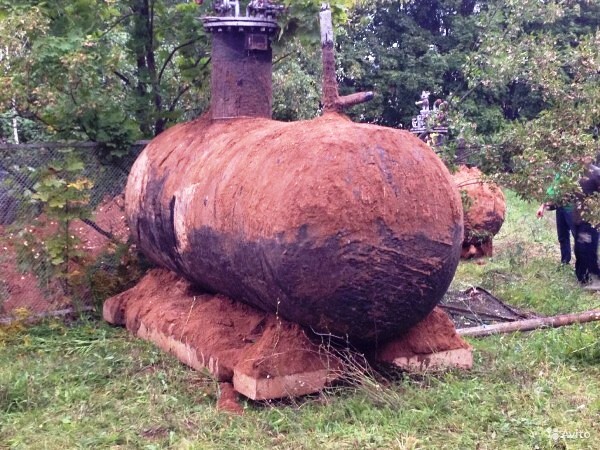
In no case should you buy a used gas tank. The metal of the tank in the ground is gradually corroding, no one will give a guarantee against gas leakage from an already used tank
At the plant, gas tanks are tested at pressures up to 25 atm. At the same time, they are equipped with safety valves designed to operate at 15–16 atm. And the liquefied gas inside the gasholder creates a pressure of only 4–6 atm.
The equipment in question is completely safe to break. You just need to make sure that propane and butane do not seep through the valves and do not accumulate nearby until a dangerous concentration is formed.
The disadvantages of heating with a gas holder are as follows:
- High initial cost.
- The presence of a potentially explosive zone on a personal plot near the house.
- Sharp "gas" smell when filling the tank.
- The need for at least once a year to pump out the tank and dispose of non-evaporated condensate.
- The risk of getting low-quality gas when contacting an unverified supplier.
- Due to the low prevalence of gas tanks, there are no competent installers and specialists in all regions of Russia for the correct maintenance of this equipment.
- The susceptibility of the LPG tank to corrosion due to exposure of the metal to condensate inside and groundwater outside.
Another important point - for a house 200 m2 a horizontal cylindrical gas tank with a volume of about 3000 liters is required. Under it you will need to allocate a plot in the area of 2x3 meters. Plus, next to it, you still need free space for a car with LPG for the time of filling the tank.
If there are only 3-4 acres of adjacent territory near the cottage, then it will be difficult to allocate even a small piece of land for gas storage equipment.
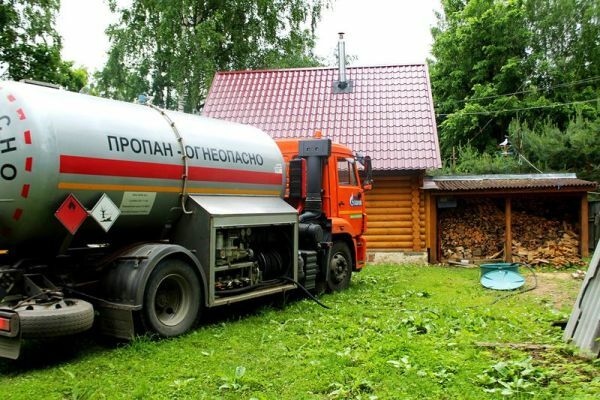
If a poor quality propane-butane mixture is poured into the gas holder, its service life will be greatly reduced. You should buy LPG only from trusted suppliers.
In order for the gas holder to serve as long as possible, it is recommended to equip it with active or passive electrochemical protection. Such systems slow down corrosion and are well worth the cost.
Conclusions and useful video on the topic
Pros and cons of autonomous gasification using a gas tank:
Gas from a gas tank is an excellent alternative to other types of fuel for home heating:
All the nuances of autonomous LPG gas supply:
After installation, you do not need to take special care of the gas tank. If it has good anti-corrosion protection and high-quality certified fittings, then its operation will be safe. At the same time, it is also not worth neglecting regular technical inspections with the involvement of competent specialists. As for the rest, gas storage heating is expensive in terms of capital costs, but in many cases it is an economically justified solution.
And if you have experience in using gas tanks for heating a private house, please share it with our readers. Tell us what advantages and disadvantages you personally noticed during the operation of the equipment. Leave your comments in the block below the article.
